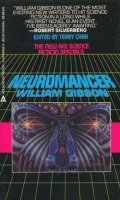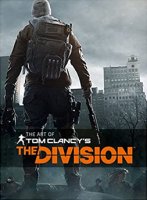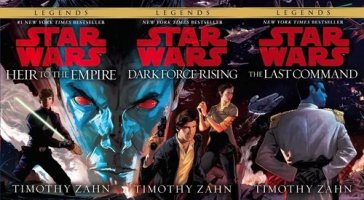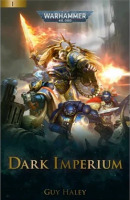Book review: Neuromancer

I've always enjoyed the cyberpunk setting, especially since I played as a teenager a few Cyberpunk 2020 RPG adventures, so reading Neuromancer was something always on my "pending readings list", but I had never really decided to do act and go for it. Well, not anymore. Last week I bought the book, and read it in a few nights.
I really don't like spoilers, as one of the reasons I enjoyed so much this reading was not knowing much about it except that it was the source of so many futuristic materials and terms, so I'll just briefly mention that we'll follow certain adventures of Case, an ex hacker that got his nervous system damaged as punishment, not allowing him to connect to the cyberspace (to the matrix) anymore. After some events, he will embark on a job that will get his body healed and allow to hack again, with a very special and dangerous mission...
I think that many if not all the basic cyberpunk setting pillars are present: mixture of noir and hardboiled style, grim, decadent future where technology has advanced but life sucks and is really hard to survive, low-tech and high-tech weaponry, cyberspace and hacking, action... even razorblades (a la Wolverine).
An excellent and intriguing read, my only issue with it was that, as I'm not a native English speaker, the street jargon dialogs, including cut words and the like, was quite a challenge to understand sometimes (except for the key words).
I also learned that this title is part of a trilogy, so I'll surely get into the remaining books in the future.
Interesting notes:
Similarities with The Matrix movies' Zion:
They called him Mir, which to these people meant “the world beneath the world.”
The descriptions of The Matrix that clearly the films were inspired by:
he still dreamed of cyberspace, hope fading nightly. All the speed he took, all the turns he’d taken and the corners he’d cut in Night City, and still he’d see the matrix in his sleep, bright lattices of logic unfolding across that colourless void...
jacked into a custom cyberspace deck that projected his disembodied consciousness into the consensual hallucination that was the matrix.
And the way to connect...
‘The matrix has its roots in primitive arcade games,’ said the voice-over, ‘in early graphics programs and military experimentation with cranial jacks.’
And kind of the source of "the machines"
[...] the construction of our artificial intelligences. She was quite a visionary. She imagined us in a symbiotic relationship with the AIs, our corporate decisions made for us. [...], a hive, each of us units of a larger entity. Fascinating.
I didn't knew the term ICE was invented in this book:
‘Icebreakers,’ Case said, over the rim of the red mug. ‘Ice from ICE, intrusion countermeasures electronics.’
But also, after the following reference to Johnny Mnemonic, I digged and found that both the reference and the movie are based on a short story!
Johnny, see, he was smart, real flash boy. Started out as a stash on Memory Lane, chips in his head and people paid to hide data there.
Tags: Books
Book review: The Art of Diablo III

I love the Diablo videogame series. I've easily poured in hundreds of hours on each title, both when they came out and afterwards, as I'm now using DevilutionX to play the original Diablo under Linux, Diablo 2 Resurrected on PC/Windows, and Diablo 3 on Nintendo Switch. Each of them has its unique flavour, but I've come to the conclusion that Diablo 3 is the most varied and entertaining one, and visually also the one not only most pleasing but also richer in dungeon and monster themes.
At a bit above 200 pages, The Art of Diablo III was a pleasant surprise. I was expecting an average art book, with a mixture of some cool but other mundane drawings, and instead the book contains an amazing selection. The videogame graphicsare excellent, and it looks gorgeous despite being in 3D, zoomed out and already more than 10 years old. But then, you see the sketches and coloured drawings of the cultists, the beastmen, the demons, even the money goblins... and it is a new level of quality. I'd like to print some of the pictures, if that serves as a measure. There are a few 3D screenshots, and small paragraphs of explanatory text, but mostly you get what you'd expect: drawings, concepts and sketches.
I know I'm biased, but to see different concept sketches of Diablo, the characters and even some of the backgrounds, is just great. Pretty much everything is around the quality of The Art of Blizzard Entertainment. If you like the game as much as I do, this is a great piece of art to collect.
Tags: Books Videogames
Book review: The Art of Tom Clancy's The Division

I recently read The Art of Tom Clancy's The Division because I'm playing the game from time to time; I got it for free a while ago and, despite initially discarding it, the truth is that, reality aside (even the most basic enemies are bullet-sponges), it is an entertaining shooter-looter (with tiny bits of RPG elements) and the setting and visuals is really great (and yes, the virus outbreak and "fighting against it" idea is one way for me to cope with our still ongoing pandemic).
And that's why I decided to grab the art book. A bit below 200 pages, with heavy graphical content and not much text (sometimes with terrible contrast, making it hard to read!), it is an amazing gallery of not only the final game locations, enemies and player clothing (there are tons of customization options), but also shows sketches, different iterations and discarded ideas both for characters and scenarios.
I am biased as I tend to love these kind of books, even for games that initially you'd think are not such a big deal, but one thing that Ubi Soft does really well is crafting incredibly detailed and ultra-realistic settings for their games. So much that they feel "more real than reality". The game is so full of details that I often stop to appreciate them before getting back into action. And with this book, you can get a bunch of nice examples without fear of getting killed by an enemy 😆
Tags: Books Videogames
Comic Book review: Star Wars: Thrawn Trilogy

I wanted to read some "Star Wars Legends" lore (the now non-cannon fiction), but I also wanted to read more about Admiral Thrawn because reading an article about SW: Tie Fighter PC game I recalled he appears on it and always wondered "who was that blue-skin baddie". The Thrawn Trilogy looked like a good entry point, consisting on 3 comics drawn in the early nineties, and set a few years after the original Star Wars Trilogy and depicting the Admiral as the main antagonist.
Well, I don't know if it's just me having different expectations, or the way the story was written didn't appealed to as much as I was hoping for, but they felt... dull; very slow paced sometimes, other times over-complicated and a bit silly, the plot and its unrolling doesn't convinces me.
The drawing is nice (specially the main characters, really nice resemblance of the movie actors), the ships, the main arc by itself are all good, but the execution didn't attracted me. I sometimes read through omnibus collections in a few days, meanwhile here for around 400 comic pages took me a substantial effort.
Tags: Comic Book
Book review: Dark Imperium

Dark Imperium is one of the first books based on the apparent new millennium (although not yet confirmed anywhere), where the Primaris Space Marines have already been created and are on their way to join (or should I say slowly replace?) their "classic" brothers, Roboute Guilliman is back and fighting chaos forces. While not the first primarch to return, it is the first loyal one to come. He feels a bit obsessed with his grim brother Mortarion, probably because of the attacks on Ultramar, but also seems to be quite impacted by what he's seen everywhere, from how the imperium survives to how the emperor "remains".
I didn't knew what to expect, if a quick sell of the Primaris and Death Guard miniatures range or new lore and maybe, just maybe, some tiny steps of the story moving forward in the 40k universe. And, while not incredible, it delivers. Hints to the emperor having lost any bit of humanity (if he had some actual care for people at all in the past), mentions on the maybe not so "legal" origins of the new space marines and Belisarius Crawl, surprise and disgust about the current state of affairs everywhere in the empire of man (will we see changes in the future?), even traces of disgust in Marneus Calgar's thoughts of his primarch's comeback. Plus of course some battles, just not anything incredible. I enjoyed more the intrigue fragments than the actual action segments.
An interesting read, I would check the synopsis before reading more books (in theory it's a trilogy) to confirm it's still appealing but not bad for "a new era".
Tags: Books Warhammer 40000